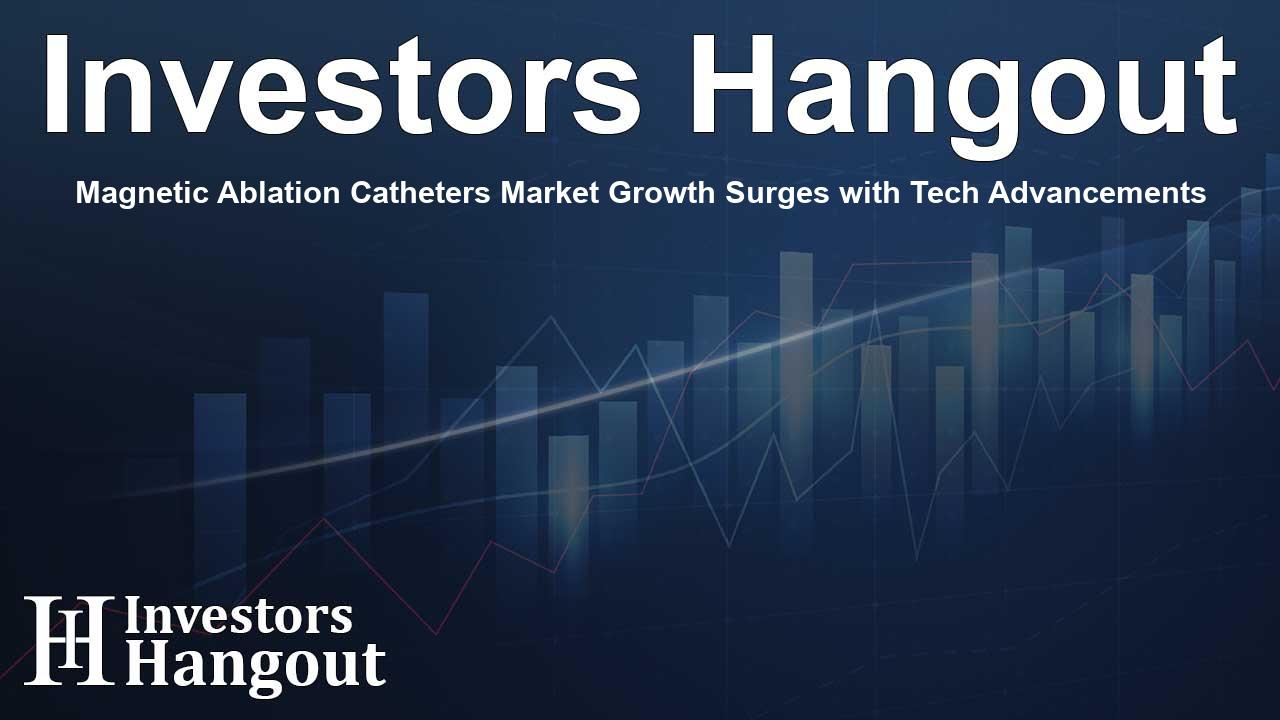Magnetic Ablation Catheters Market Growth Surges with Tech Advancements

The Magnetic Ablation Catheters Market: A Growing Opportunity
The magnetic ablation catheters market is currently experiencing rapid growth, projected to reach USD 1,114.4 million. This significant increase stems from various factors, including advancements in technology and the growing impact of cardiovascular diseases worldwide. In 2025, the market revenue is anticipated to hit USD 593.7 million, showing a compound annual growth rate (CAGR) of 7.2% until 2035.
Understanding Magnetic Ablation Catheters
These catheters are vital in treating cardiac arrhythmias, offering precise guidance through the use of magnetic fields. Their innovative design not only facilitates accurate ablation procedures but also minimizes the risks associated with traditional surgical methods, thereby enhancing patient outcomes. With cardiovascular diseases (CVDs) becoming more common, the demand for effective treatment methods is at an all-time high.
Factors Driving Market Growth
Several factors are contributing to the robust expansion of the magnetic ablation catheters market:
- Increase in Cardiovascular Disease Cases: Cardiovascular diseases remain a leading cause of mortality globally, which propels the need for advanced treatment techniques.
- Technological Innovations: The rise of robotic-assisted navigation systems and real-time imaging improves the safety and efficacy of catheter-based procedures.
- Preference for Minimally Invasive Techniques: As more patients and healthcare providers seek less invasive approaches, magnetic ablation catheters are becoming the preferred option due to their shorter recovery times.
- Investment in Cardiac Electrophysiology: The focus on research and development is increasing, as both private and public sectors enhance their investments to advance catheter technologies.
Challenges in the Market
Despite the promising growth trajectory, there are challenges to consider:
- High expenses associated with procedures can deter potential patients and healthcare facilities from adopting these technologies.
- Access to advanced healthcare services remains limited in certain regions, particularly in developing countries.
- Regulatory hurdles regarding medical device approvals may slow down the introduction of new technologies into the market.
Future Outlook and Trends
As we look towards the future, the magnetic ablation catheters market is likely to adopt several emerging trends:
Integration of Advanced Technologies
Upcoming innovations include AI systems for enhanced procedural accuracy, alongside robotic-assisted devices that will further empower physicians in performing ablation procedures.
Personalized Medicine
Growing interest in customized healthcare solutions will likely lead to the development of catheters tailored to individual patient needs, improving overall treatment efficacy.
Telemedicine Expansion
The digital transformation within healthcare may facilitate remote monitoring and guidance during catheter procedures, making these treatments more accessible to a wider population.
Collaborative Efforts Among Manufacturers
Key players in the market are expected to pursue strategic collaborations and partnerships to innovate and improve product offerings, thus solidifying their market positions.
Competitive Landscape
The market is characterized by numerous well-established companies striving to maintain a competitive edge. Manufacturers invest in developing innovative products while forging new partnerships with healthcare providers to enhance distribution networks.
Conclusion
The magnetic ablation catheters market is on the verge of substantial growth, driven by the increasing prevalence of cardiovascular diseases and an emphasis on minimally invasive treatment options. The industry faces challenges but promises continuous innovation that could redefine cardiac care. As healthcare priorities shift towards precision and patient-centered solutions, magnetic ablation catheters will become increasingly integral to modern medicine.
Frequently Asked Questions
1. What is the current market size for magnetic ablation catheters?
The market is anticipated to reach USD 593.7 million by 2025 and USD 1,114.4 million by 2035.
2. What are the key factors driving market growth?
Factors include rising cardiovascular disease cases, technological advancements, a shift to minimally invasive procedures, and increased investment in cardiac electrophysiology.
3. What challenges does the market face?
Challenges include high costs, limited access to healthcare facilities, and regulatory constraints on medical devices.
4. How is technology expected to influence the market's future?
Future trends include integration of AI, personalized medicine approaches, expanded telemedicine, and increased collaboration among manufacturers.
5. Which companies are key players in the magnetic ablation catheters market?
Notable manufacturers include Medtronic, Abbott Laboratories, Boston Scientific, and Biosense Webster, among others.
About The Author
Contact Riley Hayes privately here. Or send an email with ATTN: Riley Hayes as the subject to contact@investorshangout.com.
About Investors Hangout
Investors Hangout is a leading online stock forum for financial discussion and learning, offering a wide range of free tools and resources. It draws in traders of all levels, who exchange market knowledge, investigate trading tactics, and keep an eye on industry developments in real time. Featuring financial articles, stock message boards, quotes, charts, company profiles, and live news updates. Through cooperative learning and a wealth of informational resources, it helps users from novices creating their first portfolios to experts honing their techniques. Join Investors Hangout today: https://investorshangout.com/
The content of this article is based on factual, publicly available information and does not represent legal, financial, or investment advice. Investors Hangout does not offer financial advice, and the author is not a licensed financial advisor. Consult a qualified advisor before making any financial or investment decisions based on this article. This article should not be considered advice to purchase, sell, or hold any securities or other investments. If any of the material provided here is inaccurate, please contact us for corrections.
